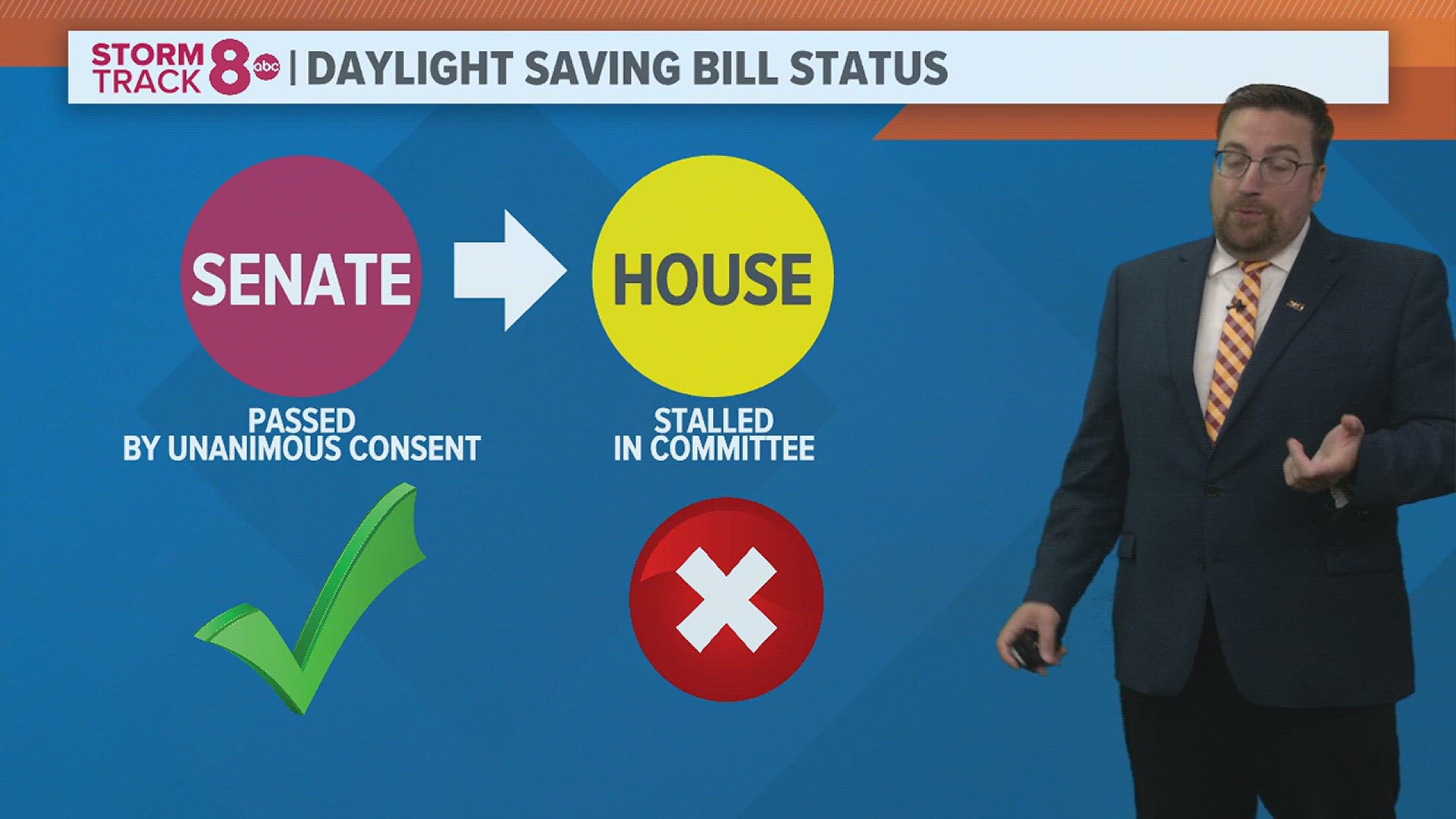WASHINGTON — Daylight saving time is coming to an end on Nov. 5, the first Sunday in November.
Clocks will "fall back" one hour at 2 a.m. on Nov. 5, granting most people an extra hour of sleep. With the change comes earlier sunrises and nightfall well before 7 p.m. It won't be until March that we fiddle with our clocks to "spring ahead" once again.
Frequent measures in the Senate and the House have attempted to make daylight saving time permanent. However, the bills usually die before they ever comes close to becoming law.
With little to no progress made on the 2023 measure, Americans will continue to "spring forward" and "fall back" in 2024.
When does daylight saving time end?
Daylight saving time ends Sunday, Nov. 5 at 2 a.m.
Why was daylight saving time created?
The practice has been implemented in some form since World War I when Germany originally introduced it to conserve power and energy by extending daylight hours.
The Standard Time Act in 1918 was the first introduction of daylight saving time to American clocks. The temporary measure, which once held the nickname "war time," lasted from spring to fall and was intended to cut energy costs during World War I. The act is also responsible for the five time zones still in place today.
The Department of Transportation was created and given regulatory power over time zones and daylight saving time in 1966. In order to correct confusing and alternating time zones, the Uniform Time Act of 1966 sought a nationwide standard for daylight saving time from the last Sunday in April to the last Sunday in October.
Few changes have happened since then. Most recently, daylight saving time was extended by a few weeks in 2005 when former President George Bush changed the law. It is now observed from the second Sunday in March until the first Sunday in November.
Despite the national observance, Arizona and Hawaii don't observe daylight saving time. Under federal law, states are allowed to opt out of daylight saving time and remain on standard time, but are not allowed to remain on daylight time.
The U.S. has previously implemented daylight saving time year-round twice, once in World War II for fuel conservation and once in 1974 as "trial run" during an energy crisis.
While there is some belief that daylight saving time reduces electricity consumption, traffic and crime, two studies, one performed in 1975 and one in 2005, when DST was extended, revealed that much of the changes in energy consumption, traffic and crime were "statistically insignificant." The 2005 study found that each day of extended daylight saving time lowered total national electricity consumption by 0.5%.
Where does the Sunshine Protection Act stand? Will daylight saving time be permanent in 2023?
Despite the over 50 years of observance, there have been pushes by over 29 states to change the practice.
Sen. Marco Rubio R-Fla. and Rep. Vern Buchanan R-Fla. frequently reintroduce the Sunshine Protection Act into their respective chambers. The bill seeks to make daylight saving time the "new, permanent standard time" and dissolves the need to change our clocks biannually.
In 2022, the Sunshine Protection Act of 2021 unanimously passed the Senate, but ultimately failed to pass in the House of Representatives and did not become law. The Senate or House versions of the Sunshine Protection Act of 2023, which were both introduced in March, also failed.
Congress is the only one that can change the observance period for daylight saving time. Since 2015, at least 45 states proposed bills to change their observance of DST, according to the Congressional Research Service.

